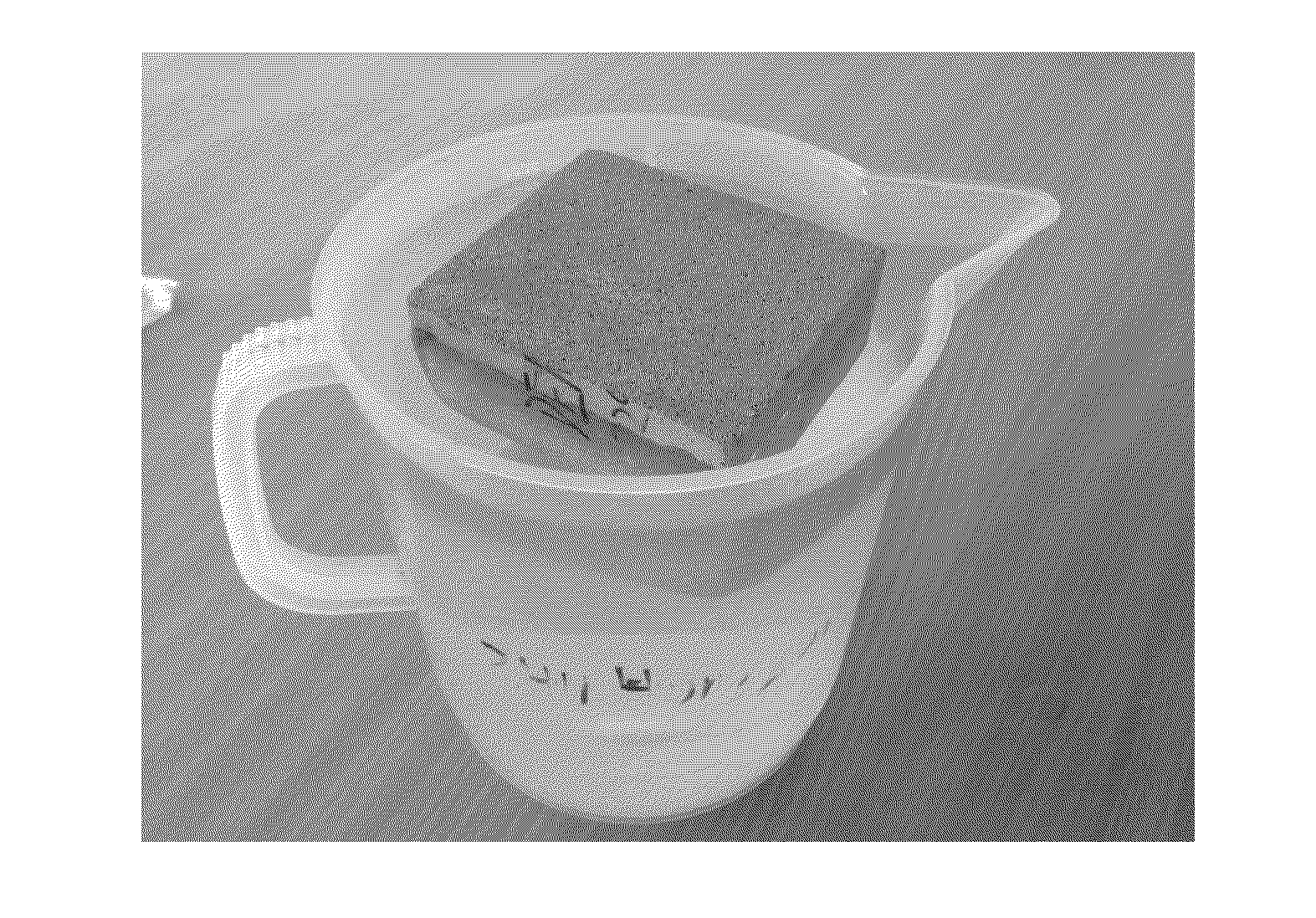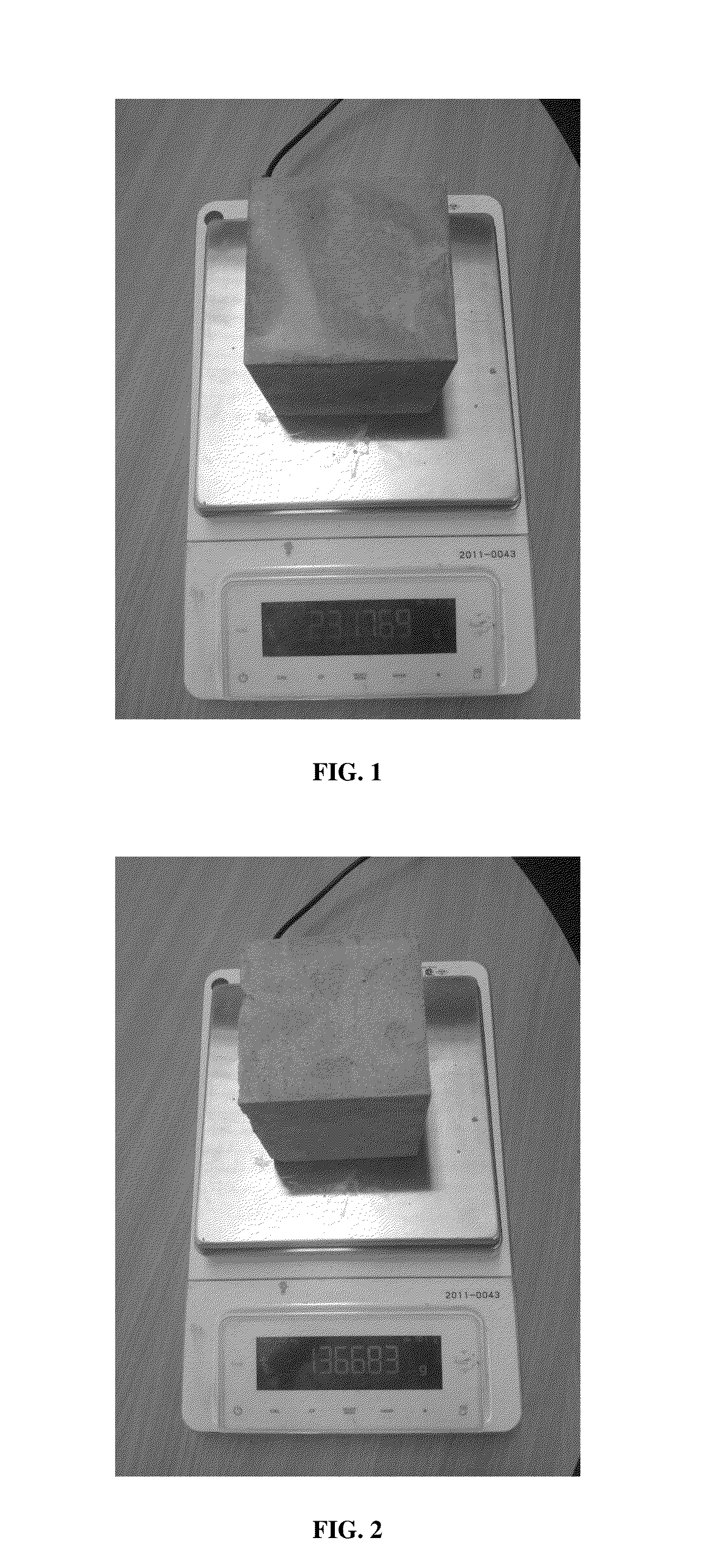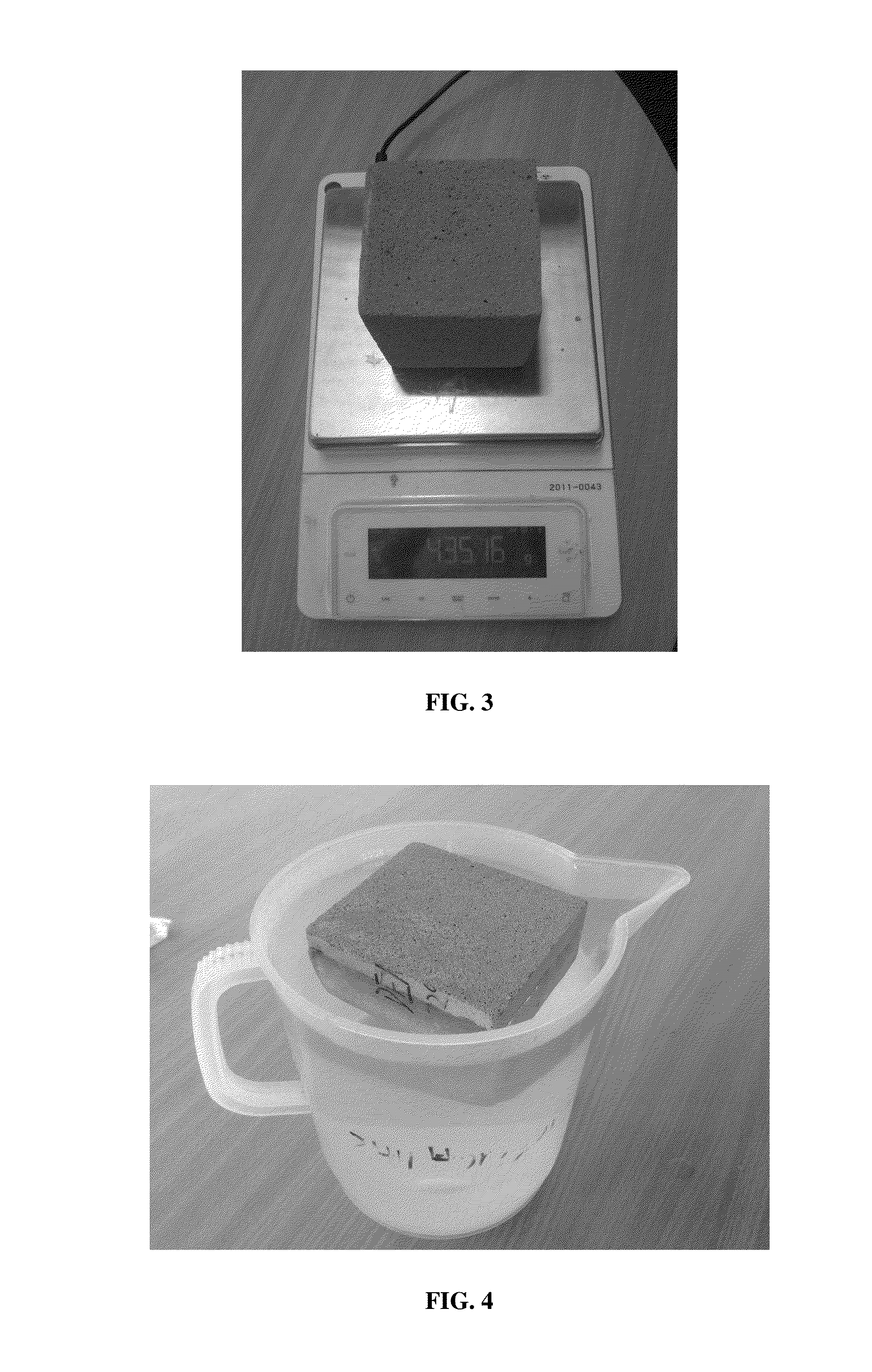Hydrophobic low shrinkage lightweight cementitious matrix
- Summary
- Abstract
- Description
- Claims
- Application Information
AI Technical Summary
Benefits of technology
Problems solved by technology
Method used
Image
Examples
example 1
Composition for Forming The Hydrophobic, Low Shrinkage and Lightweight Cementitous Matrix
[0036]To fabricate a lightweight foamed concrete with bulk specific gravity of about 1.4, 290 g calcium sulfoaluminate cement, 146 g ordinary Portland cement, 450 g ground granulated blast-furnace slag, 125 g limestone powder and 253 g surface treated clay-like material are mixed first in dry form until the dry powder is uniform. At the same time, 3.17 g polycarboxylate based water reducing agent, 0.127 g hydroxypropyl methylcellulose and 3.28 g boric acid are added into 365 g water to form a solution mixture. The solution mixture is then added to the uniform dry powder and mixed until the mixture is uniform to form a uniformly wet mixed mortar. To reduce the density of the uniformly wet mixed mortar, 2.3 g protein based foaming agent are then weighed and added into the wet mixed mortar followed by continuous mixing. Air voids are then induced within the mortar by physical foaming (friction) as ...
example 2
Composition for Forming the Hydrophobic, Low Shrinkage and Lightweight Cementitous Matrix
[0037]To fabricate a lightweight foamed concrete with bulk specific gravity of about 0.9, 862 g ordinary Portland cement, 52 g gypsum (hemihydrate), 1136 g ground granulated blast-furnace slag, 375 g limestone powder and 125g surface treated clay-like material are mixed first in dry form until the dry powder is uniform. At the same time, 17.3 g polycarboxylate based water reducing agent, 0.25 g hydroxypropyl methylcellulose and 12.9 g calcium formate are added into 752 g water to form a solution mixture. The solution mixture is then added to the uniform dry powder and mixed until the mixture is uniform to form a uniformly wet mixed mortar. To reduce the density of the uniformly wet mixed mortar, dry foam with a bulk specific gravity of about 0.05 is generated by mixing the protein foaming agent, compressed air (2 bars) and pressurized water (2 bars) in a foam generator. 137 g dry foam are then w...
example 3
Composition for Forming the Hydrophobic, Low Shrinkage and Ultra-Lightweight Cementitious Matrix
[0038]To fabricate an ultra-lightweight foamed concrete with bulk specific gravity of about 0.4, 54 g calcium sulfoaluminate cement, 54 g ordinary Portland cement, 112 g ground granulated blast-furnace slag, 31 g limestone powder and 63 g surface treated clay-like material are mixed first in dry form until the dry powder is uniform. At the same time, 2.13 g polycarboxylate based water reducing agent, 0.031 g hydroxypropyl methylcellulose, 0.427 g tartaric acid and 0.3 g calcium stearate are added into 113 g water to form a solution mixture. The solution mixture is then added to the uniform dry powder and mixed until the mixture is uniform to form a uniformly wet mixed mortar. To reduce the density of the uniformly wet mixed mortar, 30 g hydrogen peroxide are then weighed and added into the wet mixed mortar followed by a short period, for example, 10-20 s, of continuous mixing. Lightweight...
PUM
| Property | Measurement | Unit |
|---|---|---|
| Fraction | aaaaa | aaaaa |
| Fraction | aaaaa | aaaaa |
| Fraction | aaaaa | aaaaa |
Abstract
Description
Claims
Application Information
 Login to View More
Login to View More - R&D
- Intellectual Property
- Life Sciences
- Materials
- Tech Scout
- Unparalleled Data Quality
- Higher Quality Content
- 60% Fewer Hallucinations
Browse by: Latest US Patents, China's latest patents, Technical Efficacy Thesaurus, Application Domain, Technology Topic, Popular Technical Reports.
© 2025 PatSnap. All rights reserved.Legal|Privacy policy|Modern Slavery Act Transparency Statement|Sitemap|About US| Contact US: help@patsnap.com



